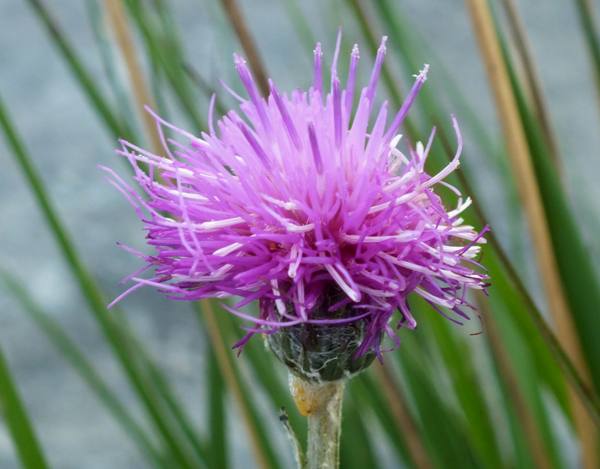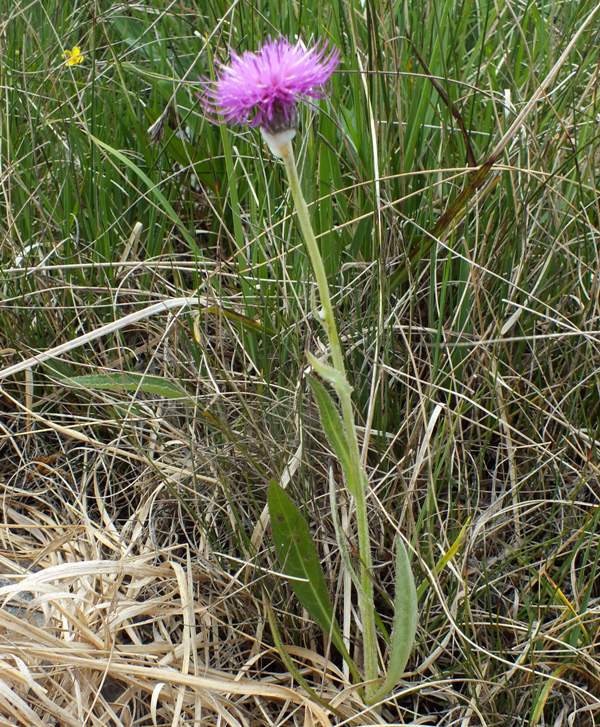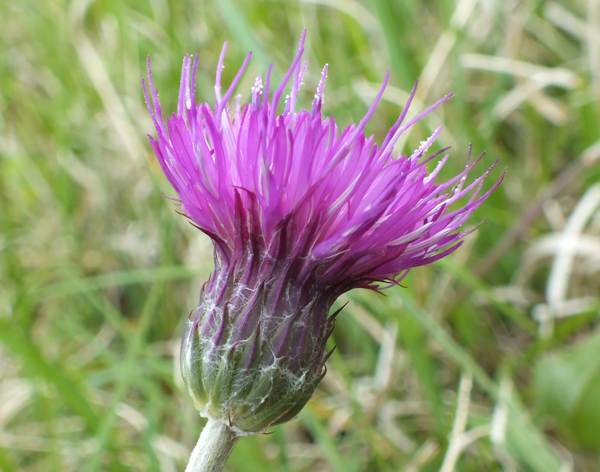Trees Birds Mammals Fish Amphibians Reptiles
Wild Algarve
Bookshop
Cirsium dissectum - Meadow Thistle
Phylum: Magnoliophyta - Class: Equisetopsida - Order: Asterales - Family: Asteraceae

Despite its common name this is not a prickly plant, and in many respects it has more in common with the various knapweeds - for example Centaurea scabiosa - than with other so-called thistles.

Description
A creeping perennial of damp grasslands and peat bogs, Meadow Thistle grows to a height of 50 to 60cm. Its ridged stems are finely downy and its finely toothed leaves are green on the upper surface and whitish beneath. The flowers are reddish purple with heads 2 to 3cm across.

Distribution
Most common in parts of western Ireland, Meadow Thistle is found throughout most of South Wales and the southwest of England, but it is increasingly rare further north and not recorded at all from mainland Scotland.

Distribution
Habitat
Meadow Thistle if found in damp grassland, including alkaline fens and some slightly acidic peat bogs.
Blooming Times
In Britain and Ireland Meadow Thistle flowers first appear in June and continue into August.
Uses
A wide range of insects, including bees and butterflies, appear to be very fond of the flowers of Meadow Thistle..
Etymology
Cirsium, the genus name, comes from Greek and means a kind of thistle. The specific epithet dissectum comes from Latin and means dissected.
Sue Parker's latest ebook is a revised and enlarged edition of Wild Orchids in The Burren. Full details here...
Buy it for just £5.95 on Amazon...
Sue Parker's new ebook is a comprehensive and fully revised edition of her acclaimed field guide to the Wild Orchids of Wales. Full details here...
Buy it for just £5.95 on Amazon...
Please Help Us: If you have found this information interesting and useful, please consider helping to keep First Nature online by making a small donation towards the web hosting and internet costs.
Any donations over and above the essential running costs will help support the conservation work of Plantlife, the Rivers Trust and charitable botanic gardens - as do author royalties and publisher proceeds from books by Pat and Sue.